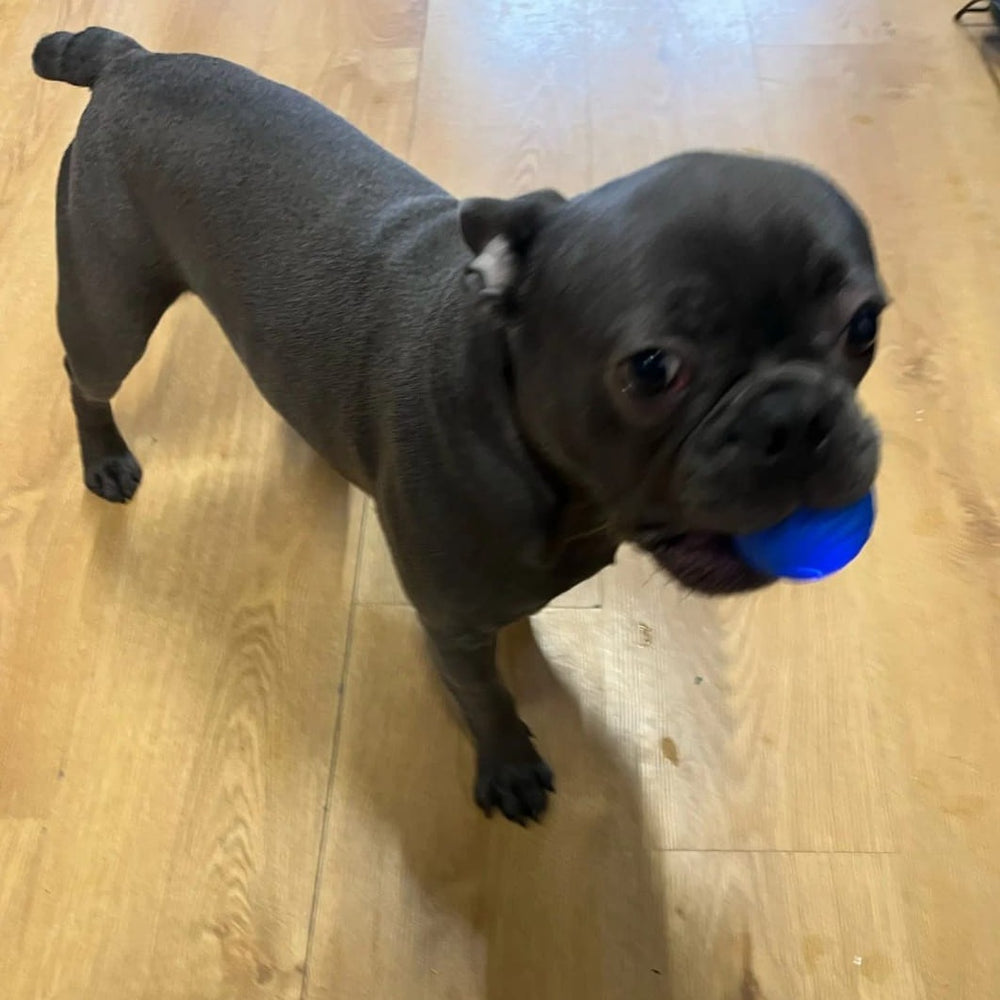Playing fetch is a classic and fun activity that many dog owners enjoy with their pets. Not only does it provide great exercise, but it also helps strengthen the bond between you and your furry friend. If your dog doesn’t naturally know how to fetch, don’t worry—teaching them is easier than you might think. This step-by-step guide will help you train your dog to play fetch in no time. For more detailed guidance, you can refer to the American Kennel Club's comprehensive guide.
Why Play Fetch?
Playing fetch has several benefits for both you and your dog:
- Exercise: It provides excellent physical activity, helping to keep your dog fit and healthy.
- Mental Stimulation: Fetch challenges your dog’s mind, keeping them sharp and engaged.
- Bonding: It strengthens the bond between you and your dog through interactive play.
- Behavioral Improvement: Regular play can reduce destructive behaviors by keeping your dog occupied and content.
Supplies You’ll Need
Before you start training, gather the necessary supplies:
- Toys: Have an array of toys available to see what your dog prefers. Some dogs enjoy chasing after a ball, while others prefer plush toys. Toys with a Velcro compartment to put food in can be very helpful for dogs that are not especially toy-motivated.
- High-Value Treats: Use treats that your dog loves to reinforce positive behavior.
- Clicker: If you use clicker training, have your clicker ready to help communicate with your dog during the early stages.
Step-by-Step Guide to Teaching Fetch
1. Get Your Dog Interested in the Toy
Start by getting your dog interested in the toy. Here’s how:
- Show Enthusiasm: Act excited and playful with the toy to pique your dog’s interest.
- Interactive Play: Wiggle the toy around, throw it a short distance, or play tug-of-war to get your dog engaged.
- Reward Curiosity: When your dog shows interest in the toy, reward them with praise or treats.
2. Teach the “Hold” Command
The first step in fetch is getting your dog to take the toy in their mouth. Here’s how to teach it:
- Sit on the Floor: Sit on the floor with your dog facing you while holding the toy.
- Show the Toy: Show the toy to your dog and wait for them to investigate it.
- Reward Interest: When your dog shows interest, praise or click and treat. Gradually increase the criteria by waiting until your dog sniffs the toy, then puts their mouth on it.
- Build Duration: Once your dog regularly puts their mouth on the toy, build duration by waiting a moment before clicking or praising and treating.
- Introduce the Command: When your dog is keeping their mouth on the toy for a couple of seconds, introduce the verbal cue “hold.”
- Hands Off: Start moving your hands off the toy while your dog holds it. Quickly put your hand back on the toy before your dog drops it, then praise, take the toy, and give them a treat.
3. Teach the “Drop It” Command
Next, teach your dog to drop the toy on command:
- Exchange for a Treat: Hold a treat in front of your dog’s nose while they have the toy in their mouth and say “drop it.”
- Reward: When your dog drops the toy to take the treat, give them the treat and praise them.
- Practice: Repeat this process until your dog reliably drops the toy on command.
4. Combine “Hold” and “Drop It”
Now that your dog understands both commands, combine them into the fetching process:
- Hold the Toy: Hold the toy out to your dog and ask them to “hold.” When they take the toy, click or praise and treat.
- Place the Toy: Place the toy on the floor in front of your dog and ask them to “hold” the toy. Introduce a new verbal cue like “fetch” or “get it” as they pick up the toy.
- Increase Distance: Gradually increase the distance you place the toy from you, starting with just a few inches. Reward your dog for successfully fetching the toy.
5. Teach the Retrieve
Once your dog is comfortable with “hold” and “drop it,” start teaching the full retrieve:
- Short Throws: Throw the toy a short distance and encourage your dog to go after it by saying “fetch” or “get it.”
- Praise and Reward: When your dog picks up the toy, praise them enthusiastically and use the “drop it” command when they return. Reward them with treats.
- Gradual Increase: Gradually throw the toy farther as your dog gets better at fetching. Keep your tone enthusiastic and always reward your dog for successful fetches.
Troubleshooting Common Issues
Dog Doesn’t Chase the Toy
If your dog isn’t interested in chasing the toy, try these tips:
- Use a High-Value Toy: Some dogs need a more exciting toy to get interested. Try different toys to see what your dog likes best.
- Interactive Play: Engage in interactive play to build interest in the toy before throwing it.
- Use Treats: Encourage your dog to chase the toy by attaching a treat to it or rewarding them for taking a few steps towards it.
Dog Doesn’t Bring the Toy Back
If your dog takes the toy but doesn’t bring it back, follow these steps:
- Leash Training: Use a leash to gently guide your dog back to you with the toy.
- Two-Toy Method: Use two identical toys. Throw one and show the second toy to encourage your dog to return for another throw.
- Call Back Command: Practice recall commands like “come” or “here” to get your dog to return.
Dog Doesn’t Drop the Toy
If your dog refuses to drop the toy, try the following:
- High-Value Treats: Use higher-value treats that your dog finds irresistible.
- Trade Game: Play a game of trade by offering another toy or treat in exchange for the one they have.
- Gentle Tug: Gently tug on the toy while saying “drop it,” and reward them when they let go.
Conclusion
Teaching your dog to play fetch is a rewarding experience that provides both mental and physical stimulation. By following this step-by-step guide and using positive reinforcement, you can successfully train your dog to fetch and enjoy countless hours of fun together. Remember to be patient and consistent, and always make the game enjoyable for your furry friend.
For more tips on dog training and care, visit the American Kennel Club's guide. Happy fetching!















Leave a comment